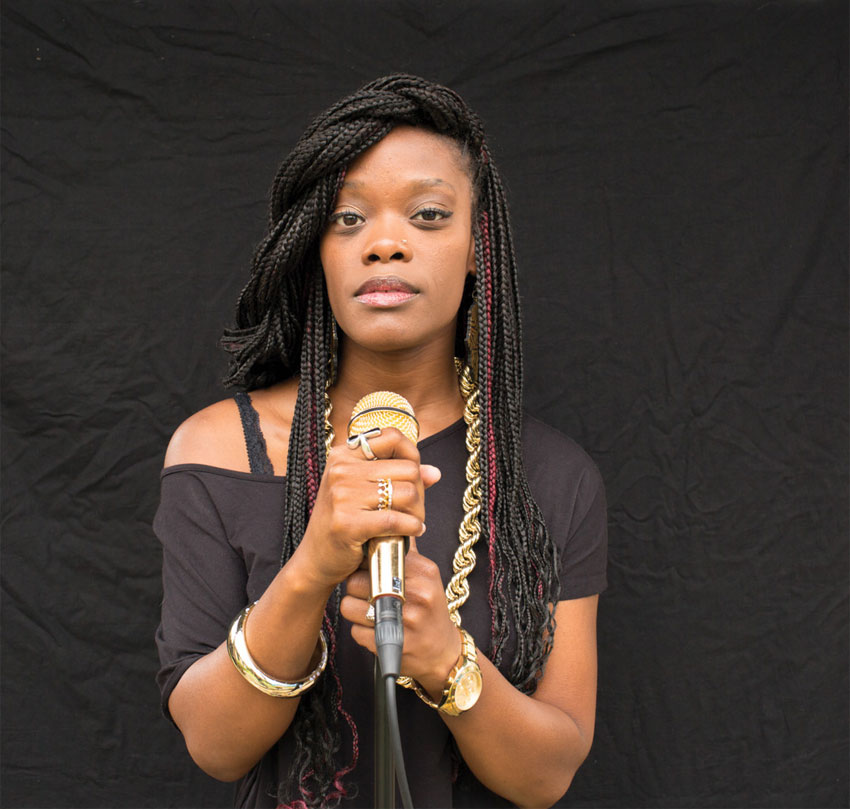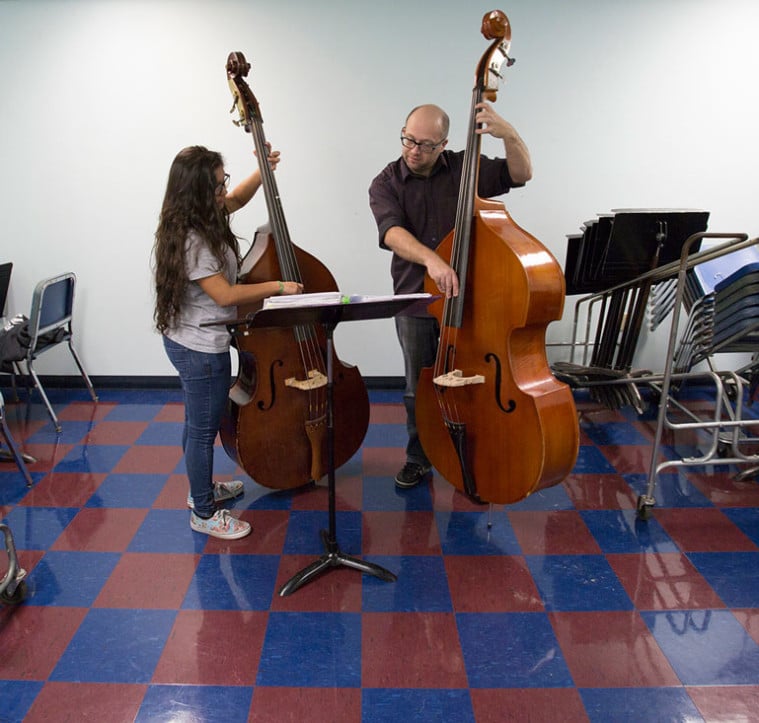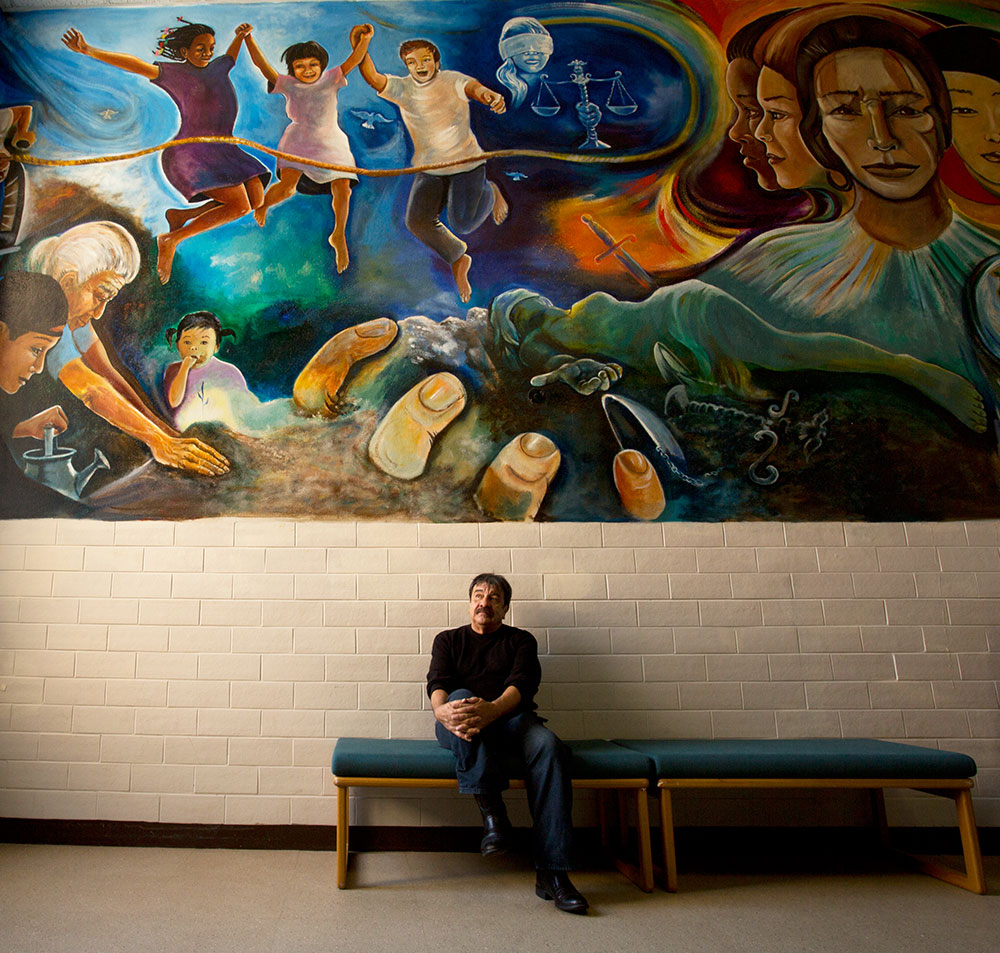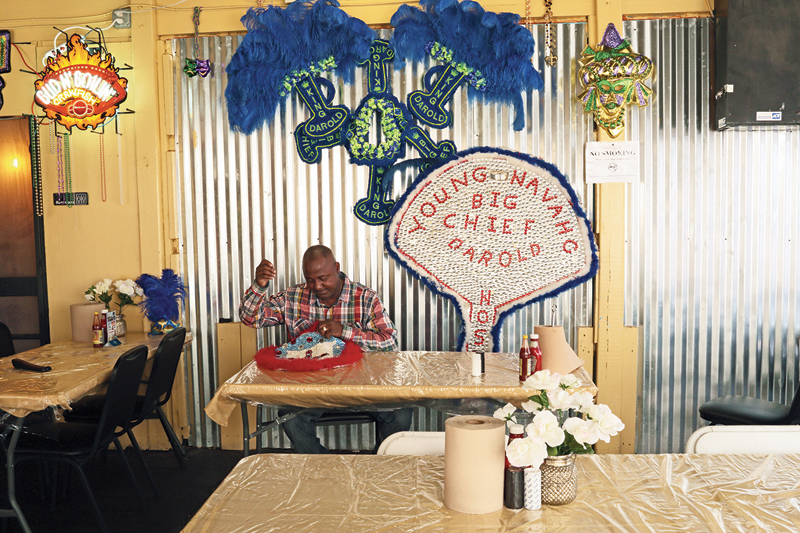
Direct Quote: Big Chief Darold Gordon Has Mardi Gras Sewn Up
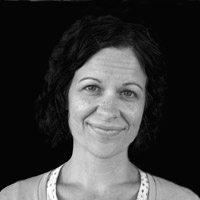
A version of this story ran in the March 2014 issue.
Above: Darold Gordon
For the past year, 44-year-old Darold Gordon has worked late into the night at his sewing table, threading beads, rhinestones, pearls and plumes to a suit he says will be his best ever. But he can’t provide any details quite yet. That’s because he’s a Mardi Gras Indian, Big Chief of the Young Navaho Tribe, and an Indian’s suit is a closely guarded secret until Fat Tuesday. That’s when tribes from all over the city parade through New Orleans in an ornate and impassioned display of symbolic sparring. Gordon has dedicated his life to the event, even though most days he’s bent over a hot grill at his Austin restaurant, the Original New Orleans Po-Boy and Gumbo Shop. Gordon was born and raised in New Orleans’ Seventh Ward, but Hurricane Katrina forced him and his wife to move with their three daughters to Texas.
“The history of the Mardi Gras Indians come away from slavery days. When African-Americans ran away from their slave owners, the native Indians took us in. When the white man came to get us back, the Indians lost their lives trying to save us. Even after slaves was free, the blacks couldn’t go parade with the whites, so our ancestors celebrated the way they was taught from the native Indians—the chants, the songs, how to live amongst each other. That’s how we pay our respects: We dress up as Indians and we act like Indians. I think right now we got 30 different Indian tribes from all over the city of New Orleans.
“I started out wanting to be a Wild Man like my friend, ‘New York,’ who used to run Wild Man with the Creole Osceolas. I thought it was unique, I thought the costumes was unique, so my mother said, ‘OK, you want to be an Indian, it costs a lot of money, you won’t have Christmas.’ I said, ‘I don’t want Christmas, I want to be an Indian.’ So Big Chief Clarence Dalcour of the Creole Osceolas let me mask with his tribe as a Wild Child. I was just 8 years old. When Big Chief had to stop masking for a while, I didn’t want to stop, so I talked to him and the Big Chiefs of the other tribes. They gave me their grace. So I started my own tribe when I was 23 years old.
“Every bit of the costume is hand-sewn. Every piece, one by one, bead by bead. Every year that I’ve ever masked, I mask in a new suit, boots to crown. It’s part of my life, it’s like eating. If you sit down, you’re going to sew. If you get home, your spot is to sit behind that needle and thread and to push it. One of the patches I done in the past was a trail of horses and a buggy, with two horses rearing up to each other and the buggy was pulling someone to his grave. I lost a good friend of mine to Hurricane Katrina and I went to the graveyard and stood over his grave and said a prayer in that suit. That suit was dedicated to the people that had passed away.
“The name the Young Navahos came about while watching an Indian movie, and a white man was trying to take the Navaho property. They wrote [the Indian] a check. On the back of the check, they thought he was signing, but he wrote ‘no sell out’ and then he ripped the check in half and gave it back to them. That was it.
“In Louisiana they let us get into schools and teach the history of it, but now we’re trying to go nationwide with the teachings. All my family, they started out as kids and now they young adults and mask, and now they kids starting to mask, and I’m more than sure they kids’ kids are gonna mask. We just have to keep educating everybody on the real reason we mask. We can’t ever forget that, no matter how far the world go or how fast the world move.”
Interview has been edited and condensed.
